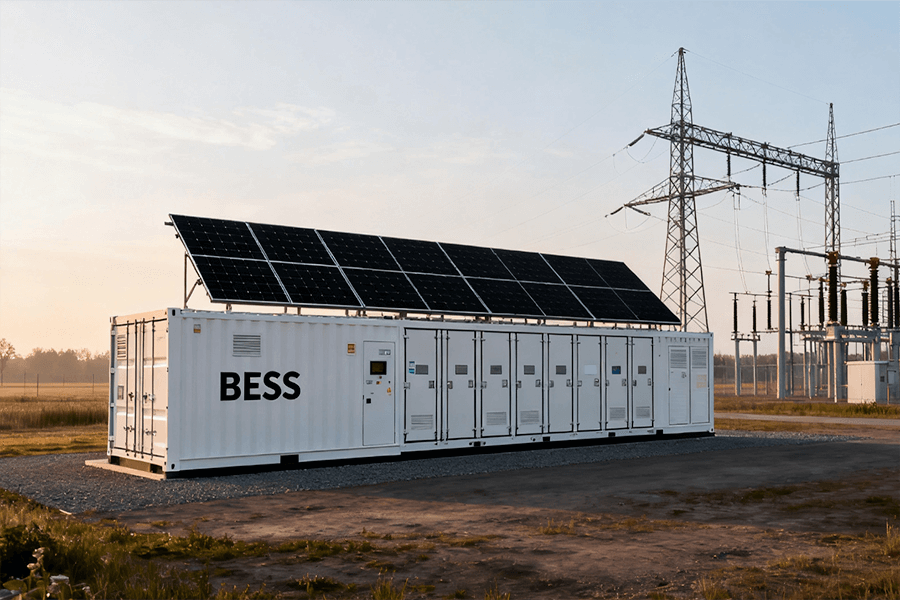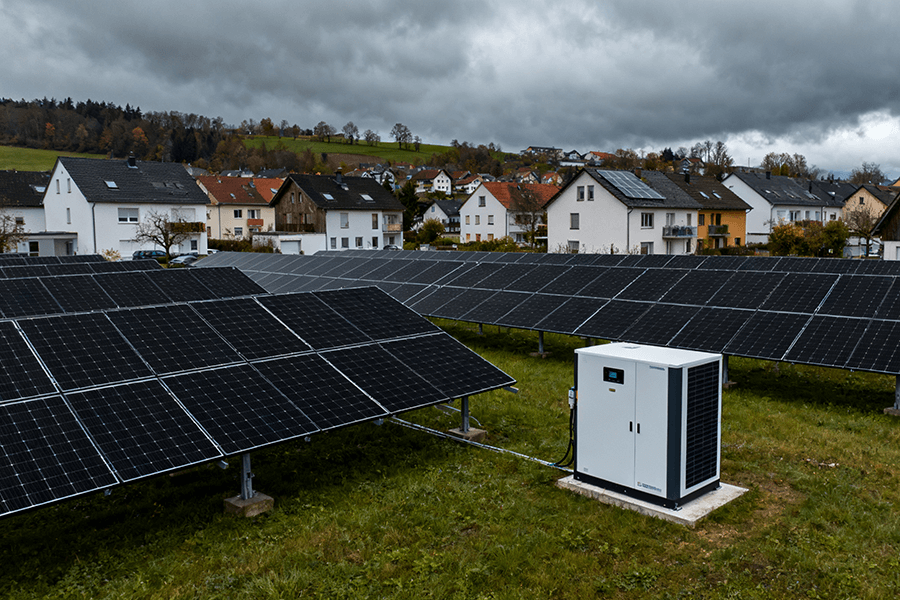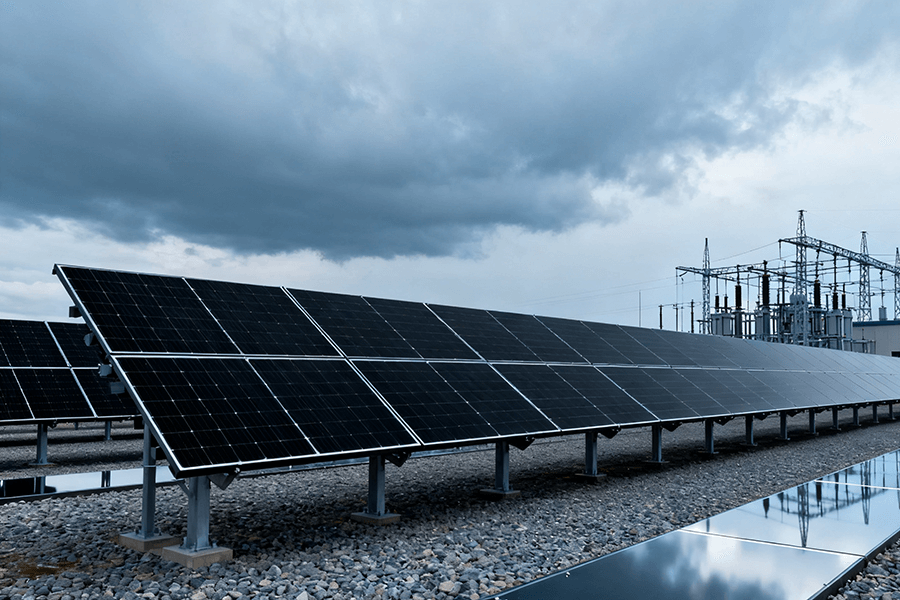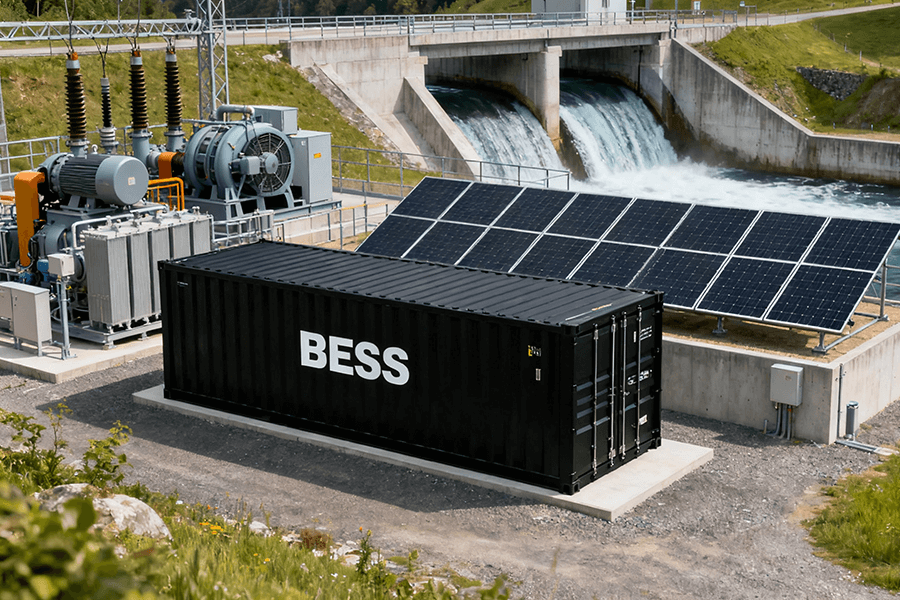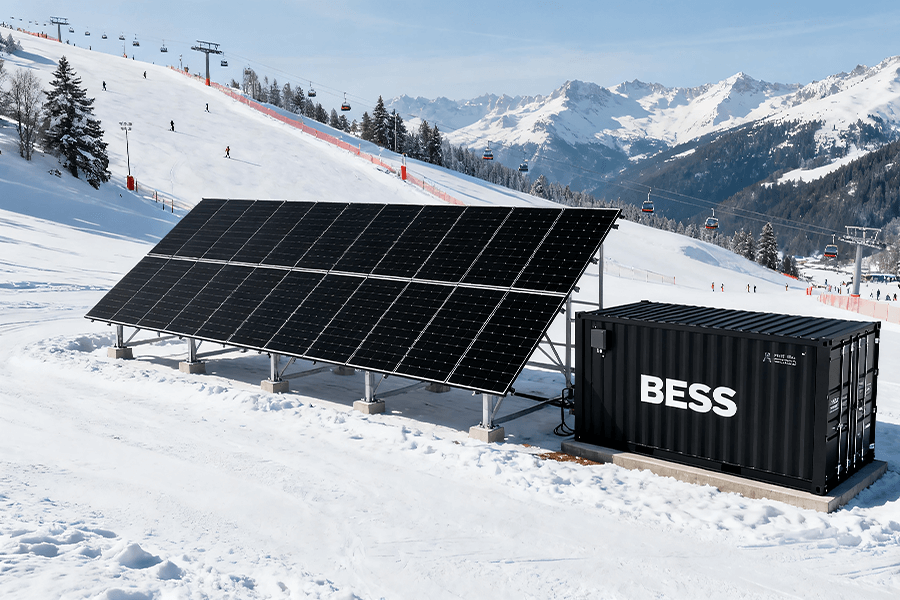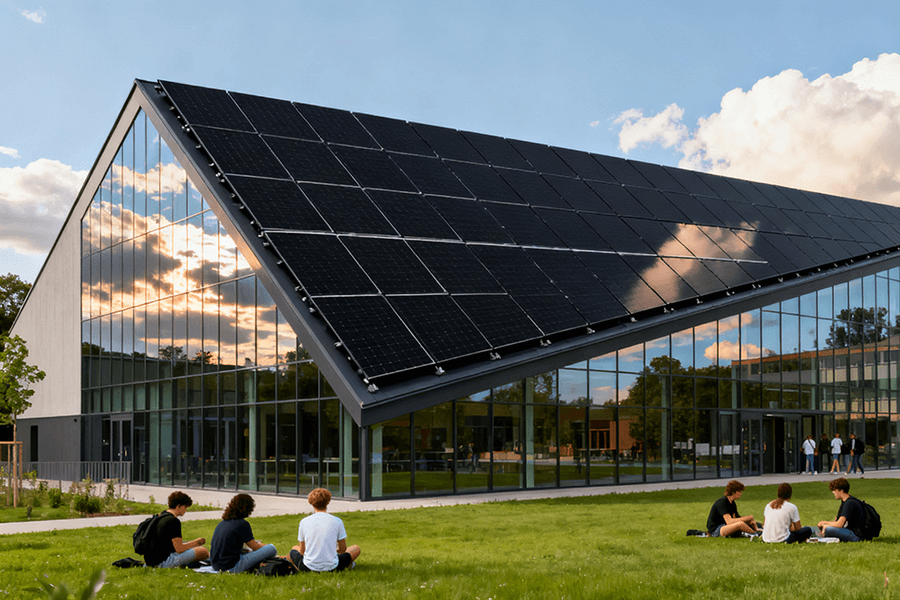
Campuses—Energy Hogs with a Green Conscience
Let’s cut to the numbers:
The energy footprint of European higher education institutions is staggering. A recent report by the European Commission reveals that:
- Large European universities consume 50–100 GWh annually—equivalent to powering 14,000 average households for an entire year.
- This massive demand is not evenly distributed; research laboratories emerge as the primary culprits, accounting for 30% of total campus energy consumption. Chemistry departments, in particular, with their around-the-clock operation of reaction chambers, autoclaves, and specialized cooling systems, drive up this figure significantly.
The architectural legacy of European universities compounds the challenge:
- 85% of EU school buildings predate the year 2000, characterized by poor insulation, single-pane windows, and aging HVAC systems.
- In Croatia, educational facilities contribute 10% of the nation’s non-residential energy use, a microcosm of the continent-wide issue. These structures, often revered for their historical significance, function more like “energy sieves,” with energy efficiency levels comparable to 1970s refrigerators.
Amid this energy conundrum, a bold commitment has emerged:
- 80% of European universities have pledged to achieve carbon neutrality by 2030.
- While behavioral changes like TU Dublin’s innovative 2025 summer shutdown—saving 300 MWh per month—offer short-term relief, a more systemic solution is required.
Enter Battery Energy Storage Systems (BESS) containers: modular, rapidly deployable units designed to stabilize electrical grids. These systems can respond to grid fluctuations in milliseconds, far quicker than the typical turnaround time for a professor grading midterm exams. Their ability to store excess renewable energy, manage peak loads, and reduce reliance on fossil-fueled power plants positions them as the linchpin in universities’ sustainability strategies.
Core Applications: BESS Containers as Campus Lifesavers
BESS containers aren’t just “batteries in a box”—they’re the campus’s Swiss Army knife, revolutionizing how European universities manage energy. Below are their two most critical roles, showcasing how these advanced energy storage solutions are reshaping educational institutions:
Lab Power: Saving Research (and Professors’ Sanity)
In the high-stakes arena of academic research, even the briefest disruption can trigger catastrophic consequences. Take, for instance, the potential impact of a mere 10-minute grid outage: it has the capacity to render six months’ worth of painstakingly collected quantum physics data completely useless. The University of Munich experienced this firsthand in 2024, when its 500kWh BESS container swiftly activated during a blackout. Thanks to this rapid response, the university managed to avoid a staggering €200,000 in research losses.
What makes BESS containers indispensable for laboratories? Their lightning-fast reaction time is a game-changer. These systems can activate backup power in a matter of milliseconds—faster, in fact, than a PhD student scrambling to secure a research grant. This split-second responsiveness ensures that sensitive equipment, including DNA sequencers and quantum sensors, can continue operating without interruption.
Why Labs Can’t Live Without BESS
| Risk | BESS Solution | Tangible Benefit |
|---|---|---|
| 10-minute grid outage | 10ms backup activation | Prevents €50k–€500k in lost research per lab |
| Voltage fluctuations | Real-time power regulation | Maintains 99.9% equipment uptime |
| Solar/wind intermittency | Solar/wind intermittency | Cuts grid reliance costs by €15k/year |
Beyond safeguarding research, BESS containers also play a crucial role in the long-term sustainability of lab operations. By storing excess renewable energy generated on campus, they reduce the need for energy from non-renewable sources, aligning seamlessly with universities’ growing commitment to environmental stewardship.
Peak Shaving: Outsmarting the Utility Bill
Campus energy use adheres to a predictable pattern, characterized by distinct peaks and valleys throughout the day. In the early morning hours, from 8–10 AM, coffee machines spring to life, and lecture hall projectors flicker on, creating a significant demand spike. Similarly, in the evenings, from 7–10 PM, dormitory air conditioners and gaming consoles drive another surge in energy consumption.
This volatile energy demand not only strains the grid but also results in higher utility bills for universities. Enter BESS containers, the ultimate solution for “peak shaving.” These intelligent systems store cheap off-peak energy—when grid prices are at their lowest—and release it during peak hours, when prices skyrocket.
The University of Copenhagen’s 1.2MWh BESS system serves as a prime example of the effectiveness of this strategy. Since its implementation, the system has successfully cut peak demand by 30%, translating to annual savings of €150,000 for the university. To put this figure in perspective, these savings could fund 10 student scholarships, purchase 500 lab notebooks, or cover three months’ worth of dorm laundry costs.
Cost Comparison: Traditional vs. BESS-Powered Peak Hours
|
Time Window
|
Grid Price (€/kWh)
|
Traditional Usage (kWh)
|
BESS-Assisted Usage (kWh)
|
Daily Savings
|
|
8–10 AM
|
€0.45
|
2,500
|
1,750
|
€337.50
|
|
7–10 PM
|
€0.52
|
3,000
|
2,100
|
€468.00
|
|
Annual
|
—
|
—
|
—
|
€150,000
|
By strategically managing energy consumption in this way, BESS containers not only reduce costs but also enhance the resilience of campus energy systems. They enable universities to operate more efficiently, allocate resources more effectively, and invest in initiatives that directly benefit students and faculty.
Sustainability + Education: BESS as a Dual Threat
BESS containers don’t just make campuses greener—they teach students how to keep them green. Here’s how:
Renewable Integration: From Solar Panels to Carbon Cuts
Solar panels adorning dorm rooftops symbolize a step towards sustainability, yet their efficacy wanes when the sun sets or clouds obscure the sky. This is where Battery Energy Storage System (BESS) containers shine, addressing the “intermittency problem” that plagues renewable energy sources. By storing excess solar energy during peak sunlight hours, these intelligent containers ensure a continuous power supply during periods of low generation, such as at night or on overcast days.
Let’s explore how leading European universities are leveraging BESS containers to drive significant environmental impact:
- RWTH Aachen’s Campus West: At the forefront of sustainable innovation, Campus West has integrated BESS technology with bio-solar roofs. This strategic combination has yielded remarkable results:
-
- A reduction of 50 kg/m²/year in CO₂ emissions
-
- A saving of 200 kWh/m²/year in grid energy consumption
The campus is not only reducing its carbon footprint but also becoming more energy self-sufficient.
- University of Amsterdam: The University of Amsterdam has made a bold statement with its 2MW solar array coupled with a 2.5MWh BESS. This powerful setup now powers 40% of the campus’s operations, translating to an annual reduction of 1,200 tons in CO₂ emissions. To put this achievement into perspective, consider the following breakdown of the carbon reduction efforts:
Carbon Reduction Breakdown (University of Amsterdam):
| Energy Source | Annual Output | Real-World Equivalent | Real-World Equivalent |
|---|---|---|---|
| 2MW Solar Array | 2.8 GWh | 1,200 tons | Taking 260 cars off the road for a year |
| BESS Optimization | – | 300 tons | Planting 8,000 mature trees |
| Total | – | 1,500 tons | Powering 350 homes with 100% clean energy |
These numbers underscore the transformative potential of BESS containers in amplifying the impact of renewable energy installations on university campuses.
Hands-On Learning: BESS as a Living Classroom
In the realm of education, theory meets practice when students engage with real-world applications. BESS containers offer precisely this opportunity, serving as dynamic learning platforms that transcend traditional textbooks.
The University of Edinburgh has embraced this approach wholeheartedly, integrating its BESS project into 5 engineering and environmental science courses. Each year, over 200 students actively participate in monitoring and analyzing the system’s performance, gaining invaluable hands-on experience.
The learning objectives are multifaceted, with students delving into various aspects of BESS operation:
- Battery Degradation Rates: Understanding how battery performance evolves over time is crucial for optimizing energy storage systems. Students track degradation patterns, analyzing factors such as charging cycles, temperature, and depth of discharge.
- Demand-Supply Balancing: With solar energy production fluctuating throughout the day, students learn how BESS containers balance the intermittent solar input with the campus’s energy demands. This involves real-time monitoring and adjustment of energy storage and release strategies.
- Grid-Forming Technology: Ensuring the stability of microgrids is a complex challenge, and grid-forming technology plays a pivotal role. Students study how BESS containers contribute to maintaining grid stability, exploring concepts such as frequency regulation and voltage control.
Dr. Emma Carter, an esteemed energy professor at the University of Edinburgh, emphasizes the significance of this approach: “This isn’t just lab work. It’s training the next generation of energy experts—with less PowerPoint, more problem-solving.” By immersing students in the intricacies of BESS operation, universities are equipping them with the skills and knowledge needed to drive the transition to a sustainable energy future.
Beyond Campus: BESS as a Community Hero
Universities aren’t islands—and neither are their BESS containers. These systems extend value to nearby neighborhoods and during crises:
Energy Sharing: Campus to Community
The University of Barcelona has implemented an innovative energy-sharing initiative, leveraging its Battery Energy Storage System (BESS) to share 10% of its stored solar power with a neighboring low-income community. This strategic partnership has resulted in tangible benefits for all parties involved:
- For Local Residents: They now enjoy 15% savings on their electricity bills, amounting to approximately €120–€180 in annual savings.
- For the University: It capitalizes on EU renewable energy tax incentives, further bolstering its commitment to sustainable practices.
Maria Lopez, the campus sustainability director at the University of Barcelona, emphasizes the broader impact of this initiative:
“It’s not just about being green,” she states. “It’s about being a good neighbor. By sharing our renewable energy resources, we’re not only reducing our collective carbon footprint but also fostering a more equitable and sustainable community.”
Emergency Power: When Disasters Strike
In times of crisis, BESS containers prove to be invaluable assets, serving as reliable sources of emergency power. During the devastating 2023 floods in Portugal, the University of Lisbon’s BESS system stepped in as a critical lifeline, powering a shelter that housed 500 evacuees. The system’s capabilities ensured the continuous operation of essential services, including:
- 24/7 Lighting: Ensuring the safety and security of evacuees around the clock.
- Water Purification Systems: Maintaining access to clean, potable water—a fundamental necessity during emergencies.
- Medical Stations: Keeping essential medical services operational, enabling the treatment of flood-related injuries and illnesses.
As climate change continues to fuel the frequency and intensity of extreme weather events such as heatwaves and storms, BESS containers are emerging as indispensable “disaster insurance” for university campuses. These systems not only safeguard the campus community but also play a crucial role in supporting surrounding neighborhoods during times of need.
Why Maxbo Solar Is Your Campus’s Perfect BESS Partner
At Maxbo Solar, we’ve been at the forefront of crafting Battery Energy Storage System (BESS) containers tailored for European university campuses since 2018. We intimately understand the unique energy challenges you face—from sudden emergencies with lab equipment demanding immediate power stability to unpredictable energy spikes in dormitories during peak usage times. Here’s why Maxbo Solar stands as the ideal partner for your campus energy transformation:
Unrivaled Deployment Speed
Our modular BESS containers redefine what’s possible in rapid installation. Deployed in just 4 weeks—a staggering 60% faster than traditional energy storage setups—we deliver results when you need them most.
Take, for example, our recent project at a prestigious French university. Despite the complexity of integrating with existing campus infrastructure, we successfully installed a 1MWh system within 28 days—faster than the average semester break. This speed not only minimizes disruption to daily campus operations but also enables immediate access to reliable, sustainable energy.
Infinite Scalability
Think of our BESS containers as the ultimate energy Lego set. Whether you anticipate a 500kWh expansion next year or a multi-MWh upgrade in the future, our system grows with you.
Adding capacity is as simple as stacking a new pod—no complex re-engineering processes, no bureaucratic red tape. This flexibility makes our energy infrastructure the perfect fit for dynamic campus environments, where needs can evolve rapidly.
Robust and Certified Performance
When it comes to durability, our BESS containers are in a league of their own. With DNV-ST-0528 and UL 9540 certifications, they’re built to withstand the harshest conditions Europe has to offer.
We’ve rigorously tested our systems in the freezing -15°C German winters and the sweltering 40°C Spanish heatwaves, ensuring consistent, reliable performance no matter the climate. These certifications aren’t just pieces of paper—they’re a testament to our commitment to safety, quality, and longevity.
Education-Centric Design
We believe that energy storage systems should be more than just functional—they should be educational tools. That’s why we integrate intuitive, user-friendly monitoring dashboards directly into your curriculum. Real-time data on energy generation, storage, and consumption becomes a living teaching resource.
One Dutch university leveraged our system’s data to fuel a student thesis on microgrid stability, which ultimately earned top marks. This isn’t just a coincidence—it’s a reflection of our dedication to creating solutions that empower learning while advancing sustainability.
At Maxbo Solar, we’re not merely selling BESS containers. We’re on a mission to construct carbon-neutral campuses that educate and innovate as effectively as they protect the planet. Dive deeper into our transformative campus projects and explore the impact we’ve made at www.maxbo-solar.com .
Conclusion: The BESS-Powered Future
By 2035, 75% of large European universities will have BESS-equipped microgrids —and for good reason. These containers turn energy chaos into control:
- They save labs from costly outages.
- They cut utility bills by tens of thousands of euros.
- They teach students real-world energy skills.
- They support nearby communities and crises.
For universities racing to hit 2030 carbon goals, BESS isn’t an option—it’s the cheat code. And with partners like Maxbo Solar, you won’t just meet your targets—you’ll outpace them.
After all, why build a campus for the future if you can’t power it?

